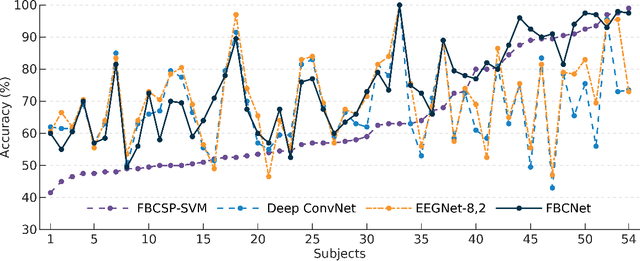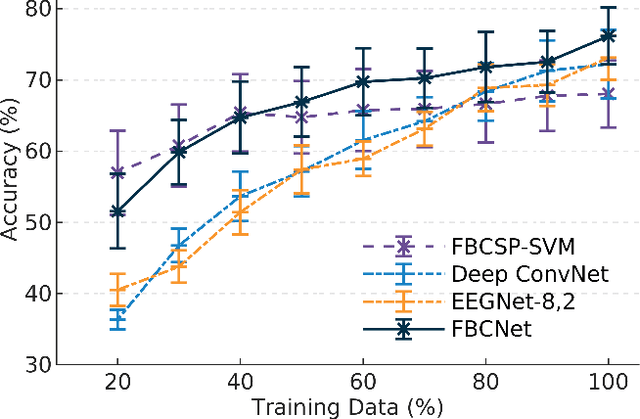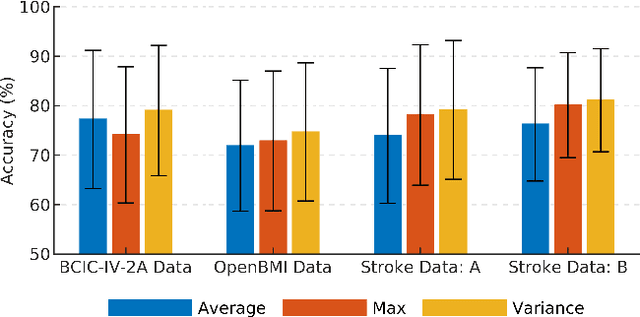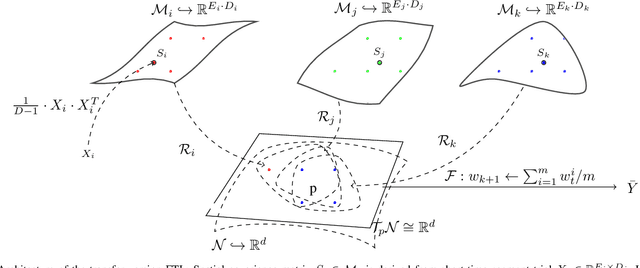Ravikiran Mane
FBCNet: A Multi-view Convolutional Neural Network for Brain-Computer Interface
Mar 17, 2021



Abstract:Lack of adequate training samples and noisy high-dimensional features are key challenges faced by Motor Imagery (MI) decoding algorithms for electroencephalogram (EEG) based Brain-Computer Interface (BCI). To address these challenges, inspired from neuro-physiological signatures of MI, this paper proposes a novel Filter-Bank Convolutional Network (FBCNet) for MI classification. FBCNet employs a multi-view data representation followed by spatial filtering to extract spectro-spatially discriminative features. This multistage approach enables efficient training of the network even when limited training data is available. More significantly, in FBCNet, we propose a novel Variance layer that effectively aggregates the EEG time-domain information. With this design, we compare FBCNet with state-of-the-art (SOTA) BCI algorithm on four MI datasets: The BCI competition IV dataset 2a (BCIC-IV-2a), the OpenBMI dataset, and two large datasets from chronic stroke patients. The results show that, by achieving 76.20% 4-class classification accuracy, FBCNet sets a new SOTA for BCIC-IV-2a dataset. On the other three datasets, FBCNet yields up to 8% higher binary classification accuracies. Additionally, using explainable AI techniques we present one of the first reports about the differences in discriminative EEG features between healthy subjects and stroke patients. Also, the FBCNet source code is available at https://github.com/ravikiran-mane/FBCNet.
Federated Transfer Learning for EEG Signal Classification
Apr 26, 2020



Abstract:The success of deep learning (DL) methods in the Brain-Computer Interfaces (BCI) field for classification of electroencephalographic (EEG) recordings has been restricted by the lack of large datasets. Privacy concerns associated with EEG signals limit the possibility of constructing a large EEG-BCI dataset by the conglomeration of multiple small ones for jointly training machine learning models. Hence, in this paper, we propose a novel privacy-preserving DL architecture named federated transfer learning (FTL) for EEG classification that is based on the federated learning framework. Working with the single-trial covariance matrix, the proposed architecture extracts common discriminative information from multi-subject EEG data with the help of domain adaptation techniques. We evaluate the performance of the proposed architecture on the PhysioNet dataset for 2-class motor imagery classification. While avoiding the actual data sharing, our FTL approach achieves 2% higher classification accuracy in a subject-adaptive analysis. Also, in the absence of multi-subject data, our architecture provides 6% better accuracy compared to other state-of-the-art DL architectures.
 Add to Chrome
Add to Chrome Add to Firefox
Add to Firefox Add to Edge
Add to Edge